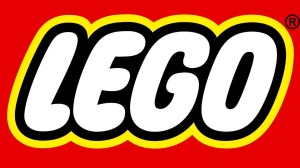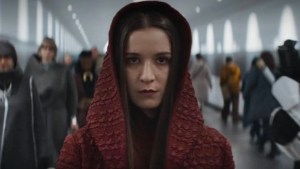If you have been an anime fan since the early 2000s or earlier, it’s probably safe to assume your first few anime were one of the Big Three of the shonen jump genre: One Piece, Bleach, or Naruto (and as an honorable mention, Dragon Ball). All of these combined majestic world building, fleshed out characters, and engaging story arcs to immerse fans in worlds that would normally feel bizarre but held up very well thanks to the authors’ writing. If not anything else, the shonen genre’s fight scenes and choreography are often the center of countless discussions and debates among the fandom.
Videos by ComicBook.com
Out of these classics, my personal favorites have to be Dragon Ball and Naruto. As I rewatch these anime known for their high-stakes battles, I wonder which of these two legendary anime have better fight scenes and choreography. Each fan has a unique perspective on which anime performed better depending on their movies, budget, frames-per-second ratios, etc. But in my personal humble opinion, Naruto has better fights than Dragon Ball and in this article, I’m going to dive into exactly why I think that.
[RELATED – Dragon Ball Super Artist Returns With New Goku & Vegeta Team Up]
Naruto’s Strategic Fights and Balanced Power Scaling

What sets Naruto’s fights apart is its emphasis on strategy over brute force. Everything in Naruto has complex moves involved. When Naruto Uzumaki, who’s not even known for being a strategic planner, faces challenging opponents, each battle almost feels like a chess match. For instance, in the Chunin Exams arc, Naruto’s fight against Neji showcases his ingenuity, using misdirection to land a decisive blow. Some fights, like Shikamaru vs. Temari, show viewers how a previously underestimate character can use his massive talents to secure the upper hand, yet know when to quit while ahead, serving a strong lesson on tactics in Naruto. At the same time, we learn that hard work (Naruto Uzumaki) does have a chance against talent (Neji Hyuga).
In the same arc, Rock Lee’s fight against Gaara was among the best animated and choreographed fights in the entire anime despite Lee’s clear disadvantage against a powerhouse like Gaara. Almost everyone thought Gaara would win with no trouble, but there are so many jutsus, different classes of power, and innate abilities like Kekkei Genkai, Genjutsu, Taijutsu, and much more, that the anime is able to give a lot of variety in action and comprehension. You don’t see the same fighting sequence that often and battles depend more upon an intricate combination of technique, tactics, and talent than brute force. This strategic depth makes every encounter unpredictable and engaging, as raw power rarely secures victory.
In contrast, Dragon Ball often leans on linear power scaling, where the strongest fighter typically wins. Goku’s battles are thrilling but revolve too much around who can unleash the bigger energy blast or achieve the next transformation. Many fans have echoed this sentiment, noting that Dragon Ball Z’s fights, like Goku versus Frieza, prioritize spectacle over nuance, with power-ups like Super Saiyan escalating the stakes but simplifying the outcome.
Naruto’s power scaling, however, feels less rigid. Characters like Shikamaru, who lacks overwhelming strength, can defeat stronger foes like Hidan through intellect and planning, keeping fights varied and grounded. This balance ensures that Naruto’s battles reward creativity, making them more compelling to me as a viewer and to everyone who values brains alongside brawn.
Choreography and Animation: Naruto’s Fluid Precision

Regarding fight choreography and animation, Naruto delivers a masterclass in fluid, expressive combat. Studio Pierrot’s work, particularly in arcs like Sasuke Retrieval or the Pain arc, brings a cinematic quality to the battles. The choreography is intricate, seamlessly blending hand-to-hand taijutsu, ninja tools, and jutsu techniques.
A great example of this is Kakashi’s fight against Obito in the Kamui dimension. You can’t help but be mesmerized by the dynamic camera angles, the weight of each punch, and the emotional stakes reflected in every move. The fight also makes great use of flashbacks, something the anime is normally criticized for. The animation amplifies these moments with vibrant colors and smooth transitions, making the fights feel alive.
Dragon Ball, while iconic, often relies on repetitive animation cycles, especially in Dragon Ball Z. Fights like Goku versus Vegeta are thrilling but feature prolonged staring contests, reused energy beam sequences, and less varied choreography. And while Dragon Ball Super improved with crisper animation, it still leans heavily on power clashes over complex movements. Naruto’s fights, by contrast, feel meticulously crafted, with each arc introducing fresh visual styles and combat dynamics that keep the action engaging.
However, I must acknowledge Akira Toriyama’s genius in manga paneling as a counterpoint to where Dragon Ball shines. Toriyama’s clean, dynamic layouts in the Dragon Ball manga make every punch and ki blast feel monumental. His use of angles and pacing creates a sense of unmatched speed and impact, influencing countless artists.
Of course, Naruto’s manga, drawn by Masashi Kishimoto, is no slouch either. Kishimoto’s detailed artwork and creative paneling, especially in battles like Rock Lee versus Gaara, convey motion and emotion equally. While Toriyama’s paneling is legendary, Naruto matches it with its flair, ensuring its fights remain visually stunning in both manga and anime.









